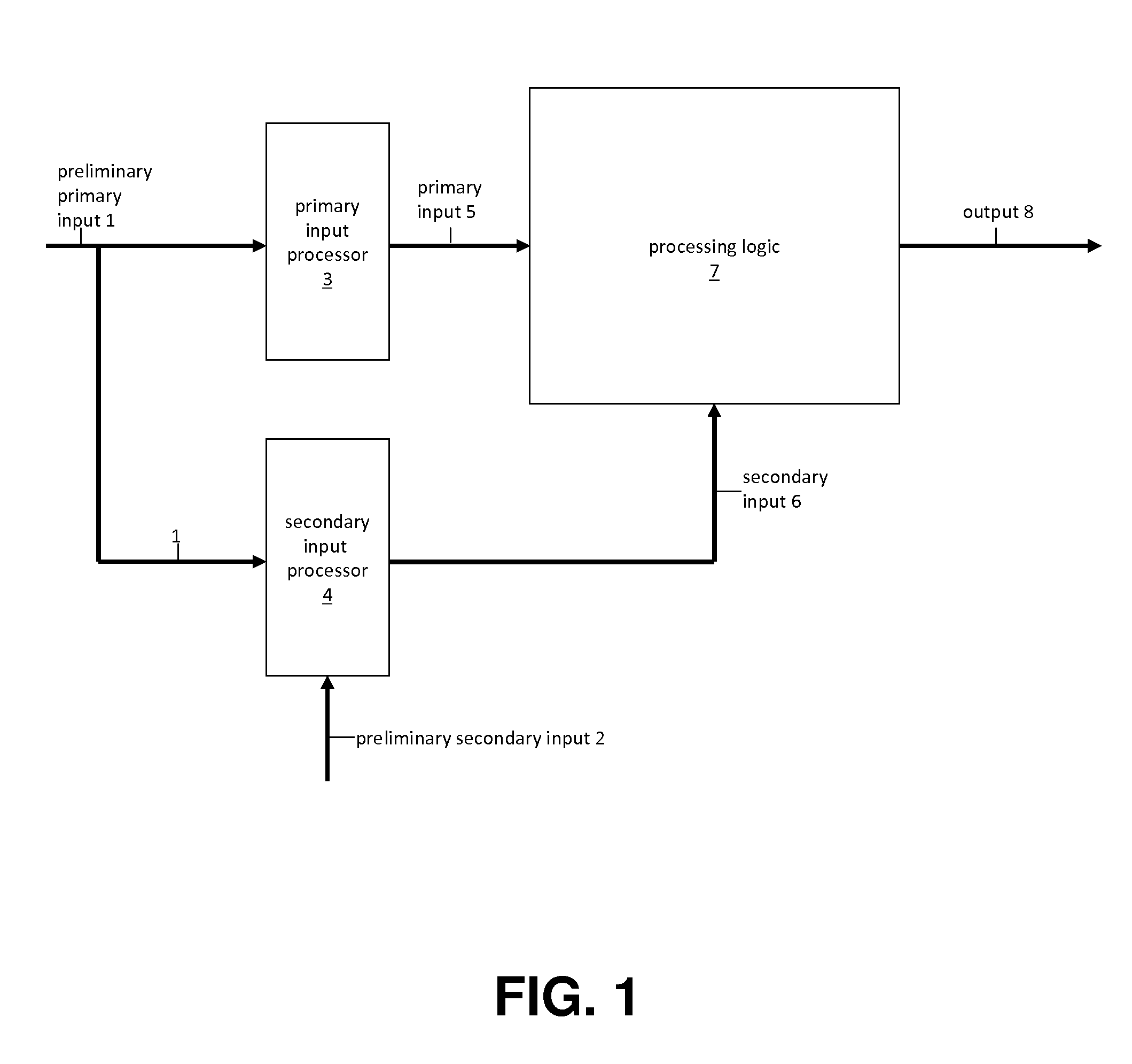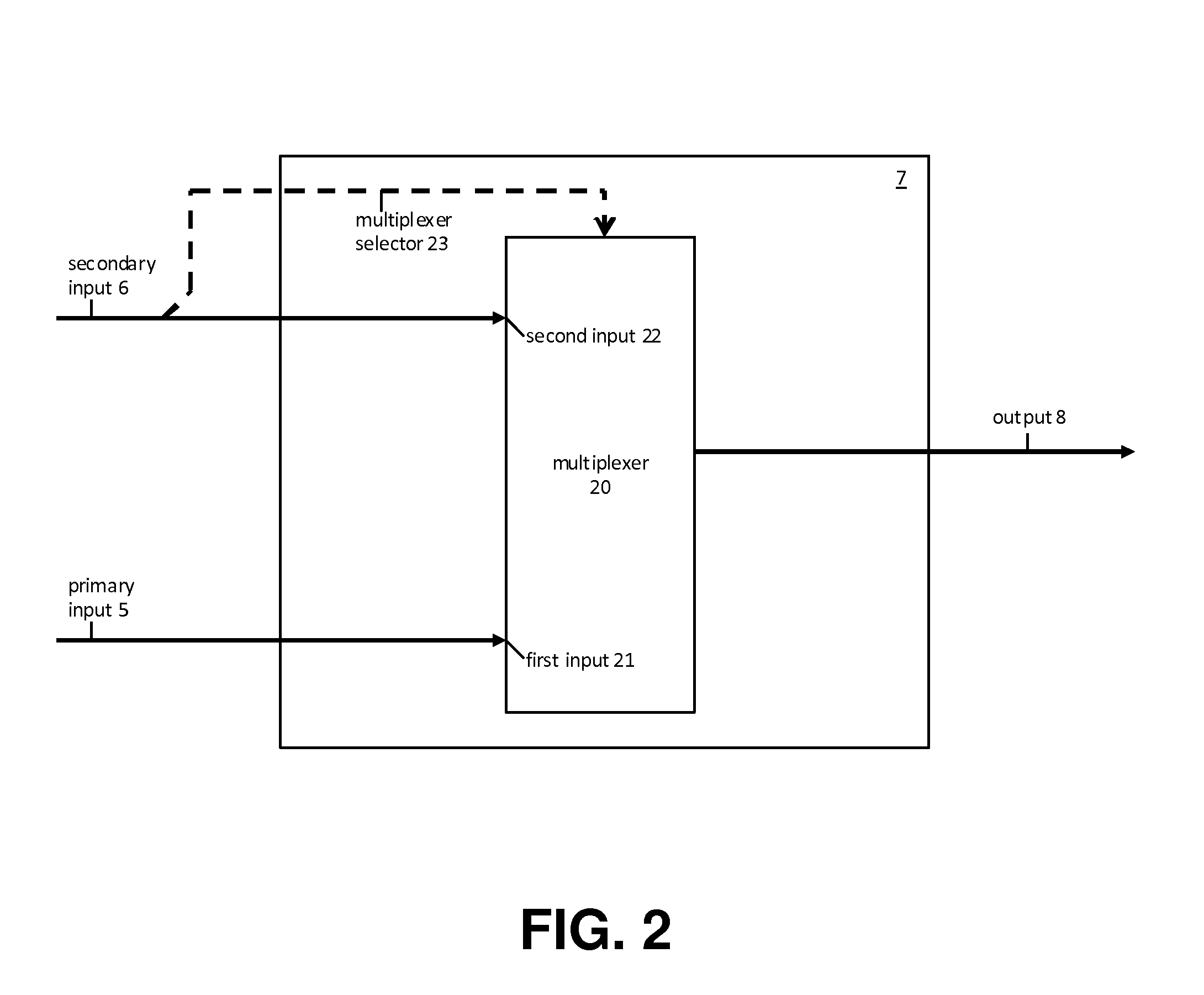Content Adaptive Data Path Logic Processing
- Summary
- Abstract
- Description
- Claims
- Application Information
AI Technical Summary
Benefits of technology
Problems solved by technology
Method used
Image
Examples
Embodiment Construction
[0027]The invention involves techniques for content adaptive digital data processing, comprising main processing steps of (1) preparing a primary input from a preliminary primary input, (2) preparing a secondary input from a preliminary secondary input, and (3) producing an output from the primary and secondary inputs, wherein the preparing of the secondary input is done at least in part based on control information received via the preliminary primary input, in order to cause the secondary input to be in same digital signal frame phase as the primary input for production of the output.
[0028]Functional elements of the invented adaptive digital data processing systems and methods are described in the following in reference to the drawings.
[0029]FIG. 1 presents an overview of an adaptive digital data processing system. Main functional elements of such a system include: a preliminary primary input 1; a preliminary secondary input 2; a primary input 5; a secondary input 6; an output 8; ...
PUM
 Login to View More
Login to View More Abstract
Description
Claims
Application Information
 Login to View More
Login to View More - R&D
- Intellectual Property
- Life Sciences
- Materials
- Tech Scout
- Unparalleled Data Quality
- Higher Quality Content
- 60% Fewer Hallucinations
Browse by: Latest US Patents, China's latest patents, Technical Efficacy Thesaurus, Application Domain, Technology Topic, Popular Technical Reports.
© 2025 PatSnap. All rights reserved.Legal|Privacy policy|Modern Slavery Act Transparency Statement|Sitemap|About US| Contact US: help@patsnap.com



